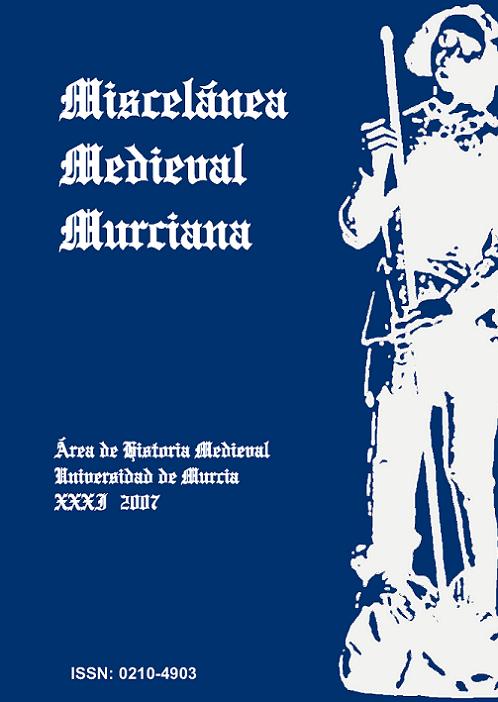CONCEPCIÓN MODERNA DEL TIEMPO EN EL VIAJE DE UNOS FRAILES DE SAN BENITO EL REAL DE VALLADOLID A MEDIADOS DEL SIGLO XV
Resumen
El monasterio de San Benito El Real de Valladolid durante el siglo XV se dedicó a una labor de reforma en pro de la observancia de la regla benedictina en los monasterios de la Corona que se regían por ella. Se establecieron así fluidas relaciones con otros cenobios que obligaban a realizar viajes por las tierras castellanas. Este artículo estudia uno de estos viajes centrándose en cómo se percibe y se mide el tiempo durante el mismo, basándose en unas notas conservadas en un documento del Archivo Histórico Nacional. En este estudio se valora la posibilidad del empleo de medios astronómicos que permitirían conocer la hora durante el viaje sin necesidad de reloj mecánico. Se muestra cómo los frailes tienen un especial interés por el tiempo, ya que lo miden mediante horas de igual duración, tal como hacemos hoy día. Finalmente se explica que poseen una concepción moderna y abstracta del tiempo pareja a la implantación y uso del reloj mecánico.Descargas
Las obras que se publican en esta revista están sujetas a los siguientes términos:
1. El Servicio de Publicaciones de la Universidad de Murcia (la editorial) conserva los derechos patrimoniales (copyright) de las obras publicadas, y favorece y permite la reutilización de las mismas bajo la licencia de uso indicada en el punto 2.
2. Las obras se publican en la edición electrónica de la revista bajo una licencia Creative Commons Reconocimiento-NoComercial-SinObraDerivada 3.0 España (texto legal). Se pueden copiar, usar, difundir, transmitir y exponer públicamente, siempre que: i) se cite la autoría y la fuente original de su publicación (revista, editorial y URL de la obra); ii) no se usen para fines comerciales; iii) se mencione la existencia y especificaciones de esta licencia de uso.
3. Condiciones de auto-archivo. Se permite y se anima a los autores a difundir electrónicamente las versiones pre-print (versión antes de ser evaluada) y/o post-print (versión evaluada y aceptada para su publicación) de sus obras antes de su publicación, ya que favorece su circulación y difusión más temprana y con ello un posible aumento en su citación y alcance entre la comunidad académica. Color RoMEO: verde.





